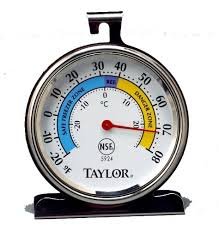Claire
Master Chef
What is the ideal temperature for a refrigerator? I have an odd kitchen area (comes from having a house built in 1864) with an under-stair area that holds a fridge on one side and a pantry closet on the other. Part of the pantry closet is actually underground (we're built into a hillside) and I've always joked that it is a root cellar in the winter. My olive and peanut oils stored there actually partially solidify in the winter. For curiousity's sake, I stuck a thermometer in one, then the other. 39 in the fridge, 38 in the pantry.
Got me to thinking, 39 is probably too warm for a fridge? I turned it down a little bit, but don't want to go low enough that my lettuce freezes, and sometimes that's a thin line.
What is the ideal temperature?
Got me to thinking, 39 is probably too warm for a fridge? I turned it down a little bit, but don't want to go low enough that my lettuce freezes, and sometimes that's a thin line.
What is the ideal temperature?

